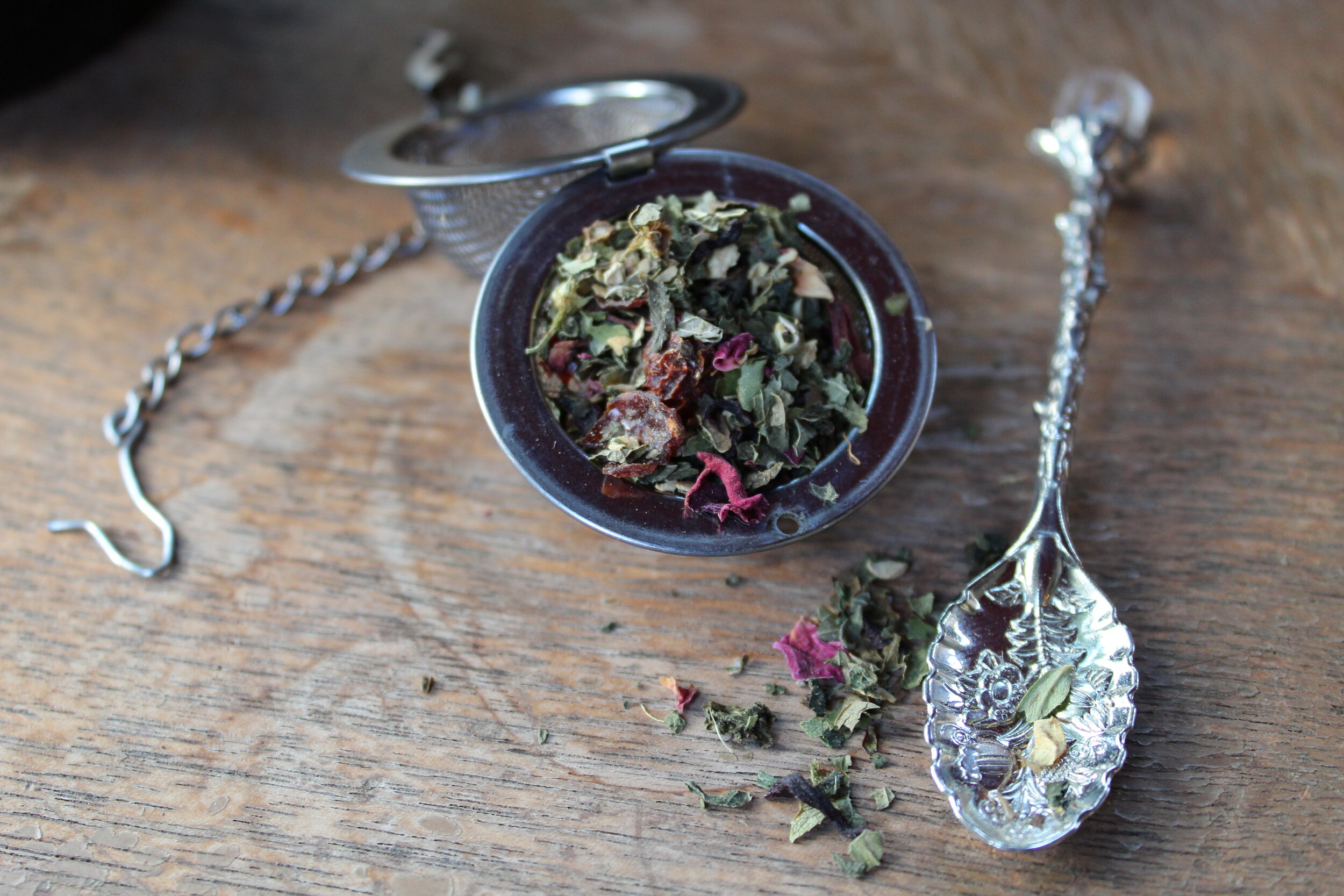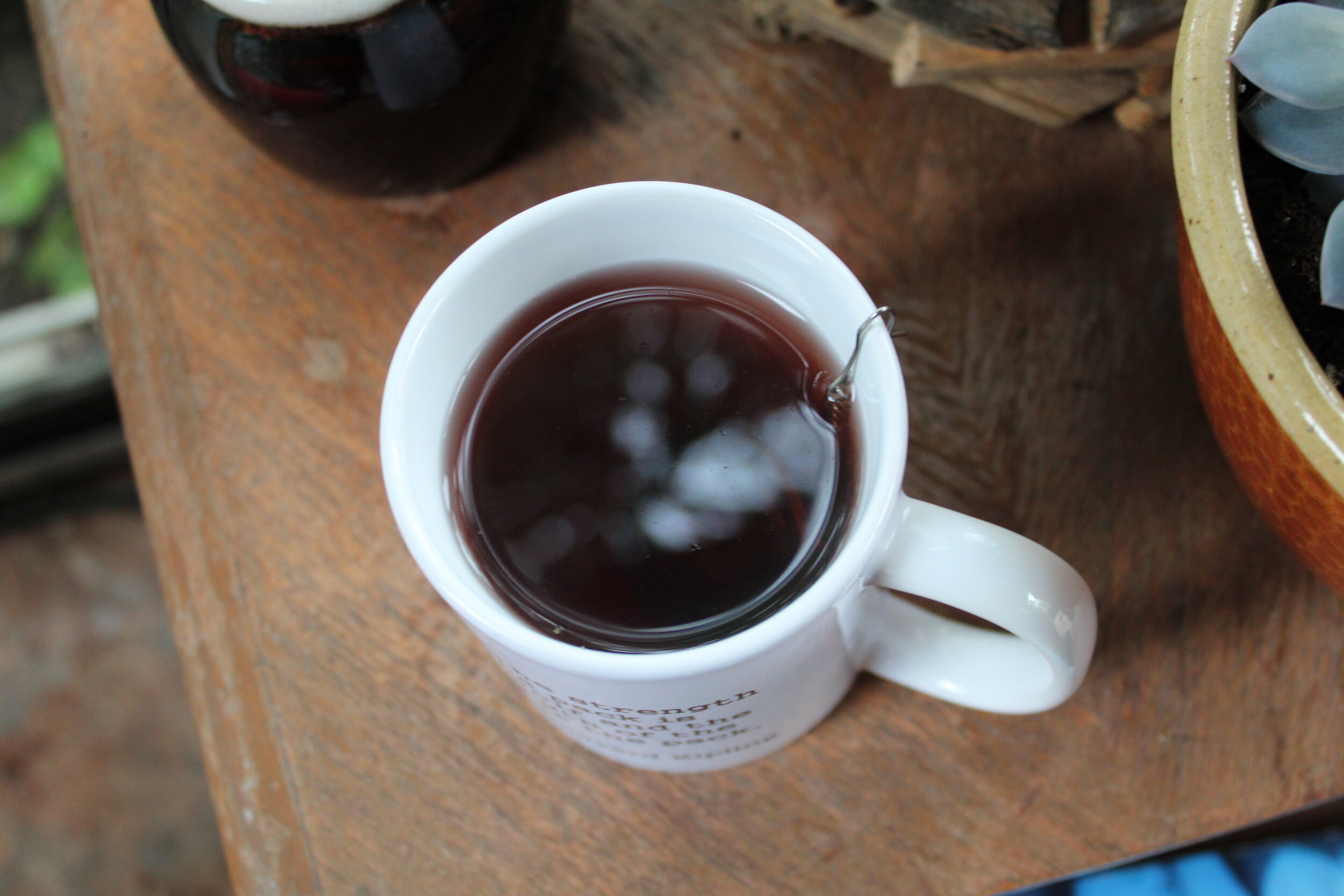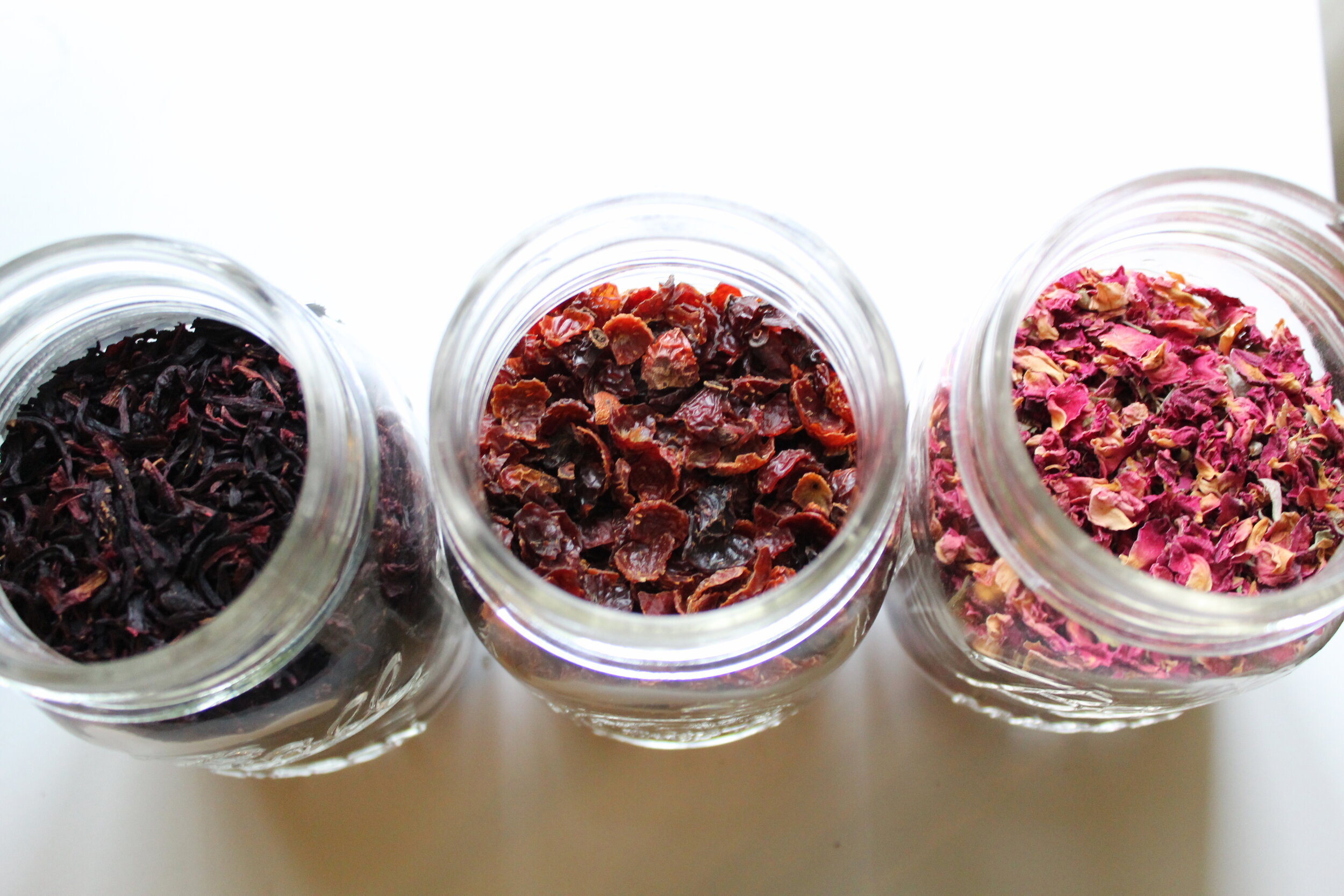Open Your Heart
Tea Blend
Description:
Sip this tea slowly and intentionally for deep inward connection and spiritual grounding. This slightly tart red tea gives your heart (body and soul) a boost to take on any emotional challenges that lie ahead.
Ingredients:
Lemon Balm, Nettle Leaf, Ginger Root, Hawthorne Leaf, Hibiscus, Rose Petals, Rose Hips.
INSTRUCTIONS:
Steep 1-2 tsp. in a strainer with a cup of hot water. Steep for 10-15 mins. The longer you steep, the stronger the tea.
BEST TIME TO DRINK:
Always! This tea is amazing any time of day, and several times a day.
Health Cautions:
Educate yourself and consult a health professional before taking any herbal remedies, especially if you have pre-existing conditions, are pregnant, or are taking medications.
Ingredient Spotlight - Hawthorne Leaves and Flowers:
“Hawthorn has been used since the Middle ages, with some accounts going back as far as the first century to Greek herbalist Dioscorides. It was later used by Swiss physician Paracelsus (1493–1541 CE). Considered to be a particularly symbolic tree with many folktales and magical myths surrounding it, hawthorn was "sacred tree medicine" to the ancient Druids, and was said to house fairies, specifically when growing with oak and ash trees. However, it was unlucky to bring the flowers into the house, quite possibly because they would bring the fairy folk with them. Hawthorn twigs and flowers were incorporated in the marriage wreath symbolizing chastity and insuring prosperity at Greek weddings and were also used to decorate alters worshipping the goddess of marriage, Hymen. In Ireland, couples desiring hawthorn's blessing would dance around it at marriage ceremonies. The sprigs were attached to newborn's cradles to protect them from evil and also used to decorate the maypole for the May Day or Beltane ceremony, which celebrated fertility and renewal. The blooming of this tree coincided with the first day of summer which occurred in May.
In the traditional medicine of Europe all parts of the tree were appreciated and utilized: leaves, berries, flowers, and the wood. The blossoms were used as a heart tonic and a diuretic, and the berries and leaves were made into an astringent tea to soothe throats. The bright red sumptuous berries were also made into a tasty brandy cordial. Additionally, the wood was carved into smaller objects such as boxes and combs and burnt as fuel producing wood fires that were extremely hot.
Hawthorn or 'shanzha' has been used in Traditional Chinese Medicine since ancient times, however most historical uses were related to digestion until recently. It is considered energetically slightly warm, associated with the spleen, stomach, and liver meridians, and reflects both sweet and sour tastes. Presently, it is used to support the cardiovascular system as well, and in fact, in China, the berries are so popular that they are made into hawthorn candies that are similar to the 'fruit roll-ups' in the West.
Hawthorn is considered a superior heart tonic by many herbalists. However, its effects on the heart are manifold. Many consider hawthorn to be transformational for the emotional or spiritual heart as well. Herbalist Matthew Becker suggests that hawthorn is specifically helpful for women with "broken hearts" i.e. for those " feeling wounded and hurt." Often the flowers and leaves are made into floral essences to address these types of emotional issues. Hawthorn is considered slightly warm energetically and both sour and sweet in taste. “
Information taken from Mountain Rose Herbs, our source for many of the herbs in this blend.








